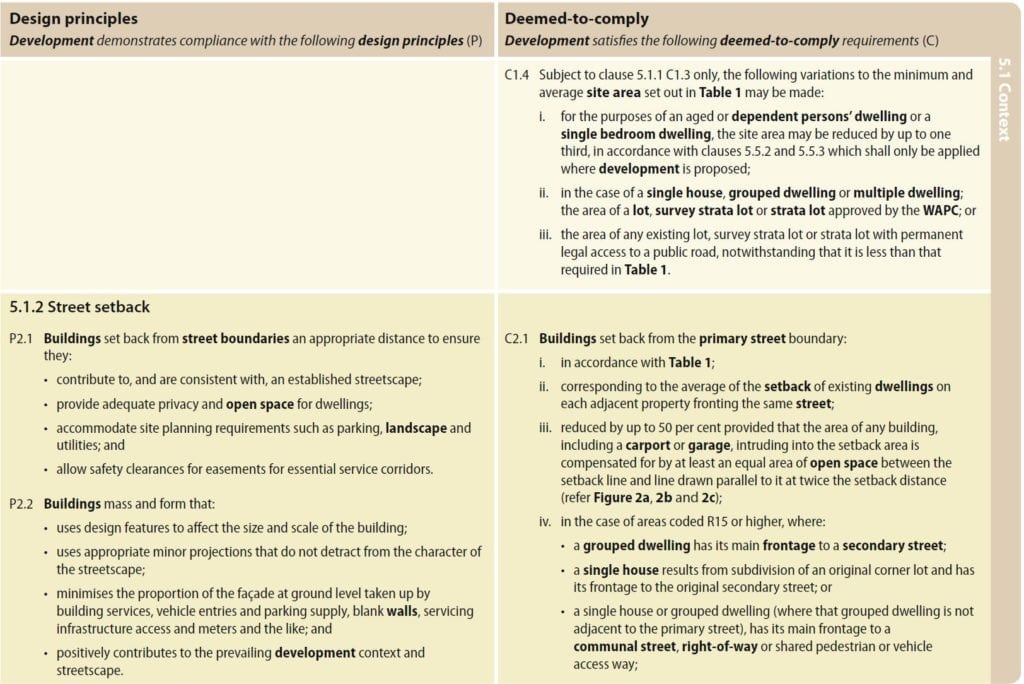What are R-Code Variations?
The design elements set out in the Residential Design Codes are divided in to two considerations: Design Principles and Deemed-To-Comply provisions.

An example of Design principles and deemed to comply provisions (WAPC).
Deemed-To-Comply provisions identify rigid design requirements for automatic development approval based on the R-codes. The easiest way to ensure a fast and easy development approval process is to ensure your proposal meets the deemed-to-comply provisions. However, there will always be situations where you may prefer or require design elements that do not comply. This is where the design principles come in to play. When submitting a development application where you know the provisions won’t be met, or a town planner asks you to address non-compliant design features of an already submitted application, a variation report can be produced which addresses the design principles of the R-Codes. These principles outline general objectives for each design element. A non-compliant design element can usually be approved when a variation report addresses the relevant design principles. For example, if a front street setback is less than what is required under the deemed to comply provisions it can still be justified if it meets the design principles shown above.
It is important to remember that variation reports are considered at the discretion of the decision maker (town planner or council) as to whether they are appropriately addressed. For this reason, it is recommended to engage the services of a qualified town planner to produce variation reports.
Get in touch now with our team!
